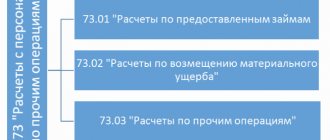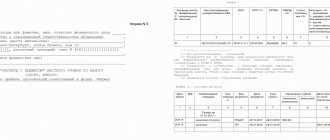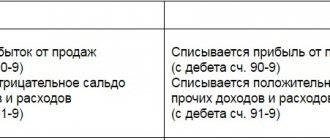Civil Code of the Russian Federation). Therefore, duties and other payments paid by the organization in accordance with Art. 15 of the Eurasian Patent Convention before obtaining a patent are expenses confirming the exclusive right to an invention and are subject to inclusion in the initial cost of the invention. If investments in assets meet the requirements of PBU 14/2007 and the organization’s goal setting in relation to this asset is determined by this direction, then according to the Chart of Accounts and instructions for its application, approved by Order of the Ministry of Finance of Russia dated October 31, 2000 N 94n, information on expenses in intangible assets summarized on account 08 “Investments in non-current assets”, on subaccount 08-5 “Acquisition of intangible assets”. It should be remembered that there is no cost criterion for classifying an object as an intangible asset under PBU 14/2007.
Accounting for intangible assets (postings)
- home
- Fixed assets
In this article I will tell you how intangible assets are accounted for when they enter and leave an enterprise. What kind of postings are made in this case? We’ll also look at some examples to make the material easier to understand. What are intangible assets? Intangible assets are non-current assets; unlike fixed assets, they do not have a physical form and are the result of intellectual activity.
In accounting, the concept of intangible assets is discussed in detail in PBU 14/2007; this provision regulates all activities related to intangible assets.
How to choose a patent in 1s 8 3 when implementing an application
Such organizations need to set the switch to the “Receive or issue an advance” position. These include, for example, services such as furniture repair, sewing and repairing leather, fur and fabric products, shoe repair, veterinary services and much more.
In addition, enterprises engaged in retail trade can transfer to a patent, but provided that the area of their retail space does not exceed 50 square meters. meters. The abbreviation “NTT” means “non-automated retail outlets”, i.e.
This analytics is not configured for all retail, but only for NTT. The first checkbox “By warehouses” is selected and cannot be edited. This means that analytical accounting of goods under these accounts is always carried out by warehouse.
Even if you disable the “by warehouses” checkbox on the “Inventory” tab, it will still remain on these accounts. Checking the “By nomenclature (turnover)” checkbox will connect the “Nomenclature” subconto to account 41.12 “Goods in retail trade in NTT at sales value”, and the negotiable one, i.e.
Setting up accounting policies in 1C: Accounting 8 for individual entrepreneurs (IP)
The data from this directory is needed when creating the “Book of Accounting for Income and Expenses of an Entrepreneur.” If an entrepreneur carries out several types of activities, then in the position “The Book of Accounting for Income and Expenses is kept for several types of activities,” you must check the box.
Then the hyperlink “All types of activities” becomes active, follow it and fill out the directory. Below, using the “Income Accounting” button, you can configure when advances will be included in income. You can choose to either include it at the time of sale, that is, income recognition occurs in the period when the sale occurs.
Or only in the period of actual receipt, in this case, if the entrepreneur conducts several types of activities, it is required to indicate the type of activity for which this type of inclusion occurs.
And the last thing we set up on this tab is expense accounting.
Postings via NMA
- As a result of the performance of official duties or for a specific assignment of the employer
- From outsiders under a concluded creation agreement.
Postings when creating intangible assets are similar to the previous case of purchase, only additional costs include payment for the services of employees of third-party organizations involved in the creation of intangible assets, payment for the labor of in-house specialists involved in the creation of intangible assets, deductions for social needs, costs of maintaining research equipment and other fixed assets involved in the creation of intangible assets, as well as accrued depreciation on them. Financial investments in debt securities 12.3. Financial investments in loans provided 12.4. Financial investments in deposits under a simple partnership agreement 12.5. Sale of securities 12.6. Provisions for impairment of financial investments 12.7.
Granting the right to use intangible assets 3.14. Table of accounting entries for accounting for intangible assets. Chapter 4. Accounting for inventories 4.1.
What are inventories 4.2. Purchase of materials for a fee. 4.3. Release of materials into production 4.4.
Is accounting for individual entrepreneurs mandatory or not?
If you follow the provisions of stat. 6 of Law No. 402-FZ, the obligation to maintain accounting records for individual entrepreneurs is established in paragraph 1. At the same time, this paragraph contains a reference to regulatory exceptions. What does this mean? We read clause 2 - an individual entrepreneur has the right not to maintain accounting, provided that he keeps records of income and expense transactions, taxable objects or indicators (physical) in accordance with legal requirements. Exactly what data needs to be taken into account depends on the taxation system used in the process of commercial activity.
For example, simplified individual entrepreneur accounting in 2021 includes compiling a book of income and expenses (KUDiR), as well as the annual submission of a simplified tax return to the Federal Tax Service. Additional reporting forms are submitted to control authorities if hired personnel are available.
Therefore, in the generally accepted sense, an individual entrepreneur has no obligation to maintain accounting records. Entrepreneurs are not required to make transactions, record all transactions in a special database, or fill out balance sheets. But to justify the correctness of calculations of taxes paid, it is necessary to take into account income, expenses or physical indicators, based on which fiscal payments are calculated. And if there are appropriate objects of taxation (for land, transport or property taxes), additional records of such assets are also kept.
Drawing up an agreement with the self-employed
The contract for the supply of goods, performance of work or provision of services with the NPA payer is concluded in simple written form. The parties have the right to conclude an agreement orally, by issuing an offer (invoice) and accepting it (payment).
Before concluding a contract, ask the contractor to confirm his status as an NPA payer. He has the right to order a certificate of registration from the Federal Tax Service through the “My Tax” mobile application or from the “My Tax” personal account on the official website of the Federal Tax Service. It is not necessary to indicate such information in the GPD. But upon inspection by regulatory authorities, this will confirm that the organization is not obliged to withhold personal income tax and pay insurance premiums.
Read more: Sample agreement with a self-employed person
How to do accounting for individual entrepreneurs
Accounting for entrepreneurs' activities is carried out in a simplified form. Of course, if an individual entrepreneur considers it advisable to organize full-fledged accounting, he has the right to do so. Today, there are many computer programs developed for individual entrepreneurs and configured to apply a certain tax regime. Automation of operations will help the manager control the movement of funds and company assets; understand the structure of receivables and payables; manage your business more efficiently.
From the above we can conclude that accounting is not an obligation of an entrepreneur, but a right. As well as the choice of how to organize accounting - in a simplified way or in full.
According to paragraph 4 of Art. 6 of Law No. 402-FZ, as a small business entity, an individual entrepreneur can use simplified accounting methods, including methods for filling out financial statements. For example, when purchasing goods and materials for activities, direct postings are allowed:
- D 10 K 51 – reflects payment for materials purchased from the supplier. Instead of traditional posting D 60 K 51 with simultaneous payment upon receipt D 10 K 60.
This is interesting: Patent Attorney Magazine 2021
In addition, entrepreneurs can reduce the number of cost accounts used in the working chart of accounts. Instead of reflecting costs on the account. 23, 25, 26 only counting is allowed. 20. And when accounting for goods and finished products on accounts 41, 43 - one account. 41, etc. The individual entrepreneur decides independently whether to apply the principles of double entry or not. It is recommended to establish the accounting procedure in the accounting policy.
Note! Detailed explanations on the organization and subsequent maintenance of simplified accounting are given in the standard recommendations of the Ministry of Finance (Order No. 64n dated December 21, 1998 and Information No. PZ-3/2015) and IPB (Minutes No. 4/13 dated April 25, 2013).
Payment of state duty 1C
To do this, go to the menu “Bank and cash desk” - “Payment orders”.
Fig.4 Payment orders
In the payment order window that opens, select the type of operation “Payment of tax”. This is necessary for the system to generate a payment order with active fields 104-110.
Fig.5 Type of transaction “Payment of tax”
Fig.6 Type of transaction “Payment of tax”
In the “Tax” line, you have the right to select the appropriate payment to the budget, however, we do not find the state duty in the list and enter it ourselves using the KBK constructor.
Fig.7 Enter the name of the duty
In this window, you can not only select the appropriate budget classification code, but also fill in the “Purpose of payment” line.
Fig.8 Name of payment
Since the first three digits of the Budget Classification Code (in accordance with Order 65 of the Ministry of Finance of Russia) indicate the income administrator, in our case it is 182 “Federal Tax Service”. The program automatically established the budget revenue account and the recipient of the payment - the Territorial Tax Inspectorate.
Fig.9 Payment purpose
We fill in the remaining fields of the payment order in the same way.
Fig. 10 Filling in the fields of the payment order
In field 101 we enter 08: Payer is a legal entity, individual entrepreneur paying other payments.
In fields 104 and 105, the previously selected budget classification code, as well as the OKTMO of the tax authority, are automatically entered.
We recommend entering “0” in fields 106 – 110, since payment of the state duty is one-time in nature and has no supporting documents.
Next, click the “Post and Close” button. After uploading the payment order and receiving a bank statement confirming the debiting of funds, payment of the state duty is made.
At the bottom of the document, pay attention to the line “Status” and next to it is the ability to manually enter a document for debiting from the current account. After receiving a bank statement confirming that the amount of state duty has been debited from the current account, it is necessary to carry out this operation. To do this, click on this line, and the following electronic document opens.
Fig.11 Electronic document
All details are filled in automatically; you only need to visually check the date of debiting funds from the current account. After completing this document, the following transactions Dt 68.10-Kt 51 are generated.
Fig.12 Wiring
Thus, account 68.10 “Other taxes and fees” was closed both as a debit and as a credit to the account.
Accounting for individual entrepreneurs using the simplified tax system
Maintaining accounting records for individual entrepreneurs using the simplified tax system involves the obligation to fill out the KUDiR book (form according to Order of the Ministry of Finance of Russia No. 135n dated October 22, 2012) and drawing up supporting primary documents for business operations. What information should be reflected in the primary document and why are these forms needed?
According to the requirements of stat. 9 of Law No. 402-FZ, all economic facts committed must be documented in appropriate accounting documents. Individual entrepreneurs have the right to develop forms of primary registration independently. In this case, be sure to include the necessary details in the documents. The list of the latter is given in stat. 9. This rule applies to both the income of an entrepreneur using the simplified tax system and expenses. In the tax calculation process, it is prohibited to take into account in the taxable base amounts that are not confirmed by primary documents.
Therefore, simplified individual entrepreneur accounting is not required to be maintained in full if KUDiR is filled out. What to do with the cash book? If a book of income and expenses is maintained, filling out a cash book is not necessary. At the same time, entrepreneurs have the right to organize accounting in the company at their discretion - in full (fraught with increased costs) or using a simplified method (without using double entry, accounting registers, etc.).
Patent system: everything an accountant and individual entrepreneur needs to know about
At the same time, the upper limit of income cannot exceed 1 million rubles, unless otherwise established by clause.
8 tbsp. 346.43 Tax Code of the Russian Federation. Subjects of the Russian Federation have the right to increase the maximum amount of potential annual income by no more than 10 times (clauses
19 clause 2 art. 346.43 Tax Code of the Russian Federation). 3. The number of employees during the tax period should not exceed 15 people for all types of business activities, incl. under civil contracts.
4. Income limit. They should not exceed 60 million.
rub. for all types of activities in respect of which the PSN is applied (clauses
1 clause 6 art. 346.45 Tax Code of the Russian Federation). The tax base for PSN is defined as the monetary value of the annual income potentially receivable by an individual entrepreneur for the type of business activity in respect of which the patent is applied. It is determined for the calendar year by the law of the subject of the Russian Federation (clause 1 of Article 346.48 of the Tax Code of the Russian Federation). Magnitude
Accounting for state duties in accounting: postings
If the obligation to pay duties arose in the course of the company’s main activities, the accrual of state duty is reflected by the entry
- D20 (or 25, 26, 44) – K68 / State duty.
Examples of operations of this type are the preparation of contractual documentation, certification of signatures of officials, translation of documents into a foreign language, etc.
Accounting for state duties in accounting
The need to pay state duty may vary:
1. Acquisition of assets (property and non-property rights), including those used over several periods. For example, obtaining a subsoil use license; acquisition of a trademark or real estate.
Create a standard transaction for charging duties
Using standard operations, you will make it easier for you to create similar transactions in the future. To create a standard transaction, go to the “Operations” section (1) and click on the “Typical operations” link (2). The journal will open.
In the window that opens, click the “Create” button (3). A form for creating a new standard operation will open.
In the form, indicate the name of the typical operation (4). Next, fill in the fields:
- Debit
(5). Specify account 91.02 “Other expenses”; - Analytics for account 91.02
(6). From the directory “Other income and expenses”, select the article “State duty”; - Credit
(7). Specify account 68.10 “Other taxes and fees”; - Types of payments
(8)
.
Indicate “Tax (contributions): accrued/paid”; - Budget levels
(9)
.
Enter "Federal Budget".
To save, click the “Save and Close” button. Now there is one more in the list of typical operations. By analogy, create standard transactions for accruals on the debit of accounts 20,25,26,44. In the next chapter we will tell you how to use a standard operation to calculate state duty.
HMA cushioning
The price of HMA can be compensated by calculating depreciation. This operation on intangible assets will allow you to transfer the price of assets to the cost of production.
Depreciation occurs every month, and all deductions go to the expenses of the enterprise.
Accounting for individual entrepreneurs on UTII
If the activities of an individual entrepreneur are on UTII, accounting is carried out in accordance with the requirements of subclause. 1 clause 2 stat. 6 of Law No. 402-FZ. In particular, it says here that when reflecting accounting transactions in accordance with legislative norms, maintaining separate accounting records is not required. But what data should an individual entrepreneur control on imputation?
To understand the essence of the issue, it should be remembered that tax calculation for UTII is carried out based on the basic profitability established at the legislative level and the number of physical indicators. The type of indicator depends on the business activity of the entrepreneur: for trade, this could be the area of the hall, for the provision of transportation services, it could be the number of vehicles, etc. This means that individual entrepreneurs in the imputed special regime must monitor the number of their physical indicators quarterly and make adjustments to the calculations when the value changes.
This is interesting: What is the role of patents in innovation?
individual entrepreneur based on a patent in 1C Accounting 8
2.0, like 3.0, makes it possible for individual entrepreneurs to keep records on a patent. This has been implemented since version 2.0.39.5.
We recommend reading: File a complaint about police inaction electronically
First you need to configure the program.
In our example, IP Ivanov will provide veterinary services under a patent. We go to the accounting policy (through the “Enterprise” tab or the top menu “Enterprise”, item “Accounting policy of organizations”).
And on the “General Information” tab, check the box that an individual entrepreneur applies the simplified tax system based on a patent. Next, go to the “Patents” tab, where by clicking on the button of the same name, add the patent and its term.
In our example, a patent for veterinary services was obtained for a year. Then, on the “STS” tab, select the added patent in the line “Basic procedure for reflecting advances from the buyer for tax purposes.”
About setting ed.
Accounting for individual entrepreneurs on a patent
The patent taxation system is the exclusive prerogative of entrepreneurs. A legal entity does not have the right to use PSN in its activities. Keeping accounting records for individual entrepreneurs on a patent requires compiling a book of income (form according to Order of the Ministry of Finance of Russia No. 135n dated October 22, 2012). All transactions for the corresponding tax period are reflected here.
The book is opened anew for the calendar year. If an individual entrepreneur is engaged in several types of business, a separate copy of the CUD should be filled out for each. Certification by the Federal Tax Service is not necessary. No more tax reports are required to be prepared or submitted to the inspectorate. However, when an entrepreneur enters into employment contracts with hired specialists, it is necessary to ensure that reporting on salary taxes and contributions is completed.
How to determine income when combining PSN with other modes
The Tax Code states that income from sales for all types of activities to which the PSN is applied should not exceed 60 million rubles per year (clause 6 of Article 346.45 of the Tax Code of the Russian Federation). Therefore, an individual entrepreneur working for PSN must constantly monitor his revenue within the framework of patent activities. The Ministry of Finance constantly reminds us of this.
But what if he combines PSN with other taxation regimes?
When combining PSN with other tax regimes, the individual entrepreneur is required to keep records of property, liabilities and business transactions in accordance with the rules established within the framework of the corresponding taxation regime.
If a businessman applies both the PSN and the simplified tax system, when determining the amount of income from sales for the purpose of complying with this limitation, income from both special regimes is taken into account.
An individual entrepreneur who combines PSN and UTII will lose the right to use PSN if, from the beginning of the calendar year, his income exceeds 60 million rubles. But only from activities to which the patent system applies. Income subject to UTII is not taken into account in this case.
If an individual entrepreneur combines PSN and general regime, then to calculate the annual income limit at which PSN can be applied, income from general regime activities is also not taken into account. This was explained by the Ministry of Finance in a letter dated July 29, 2021 No. 03-11-11/66669.






